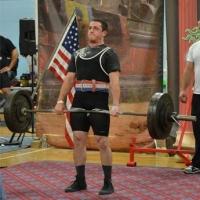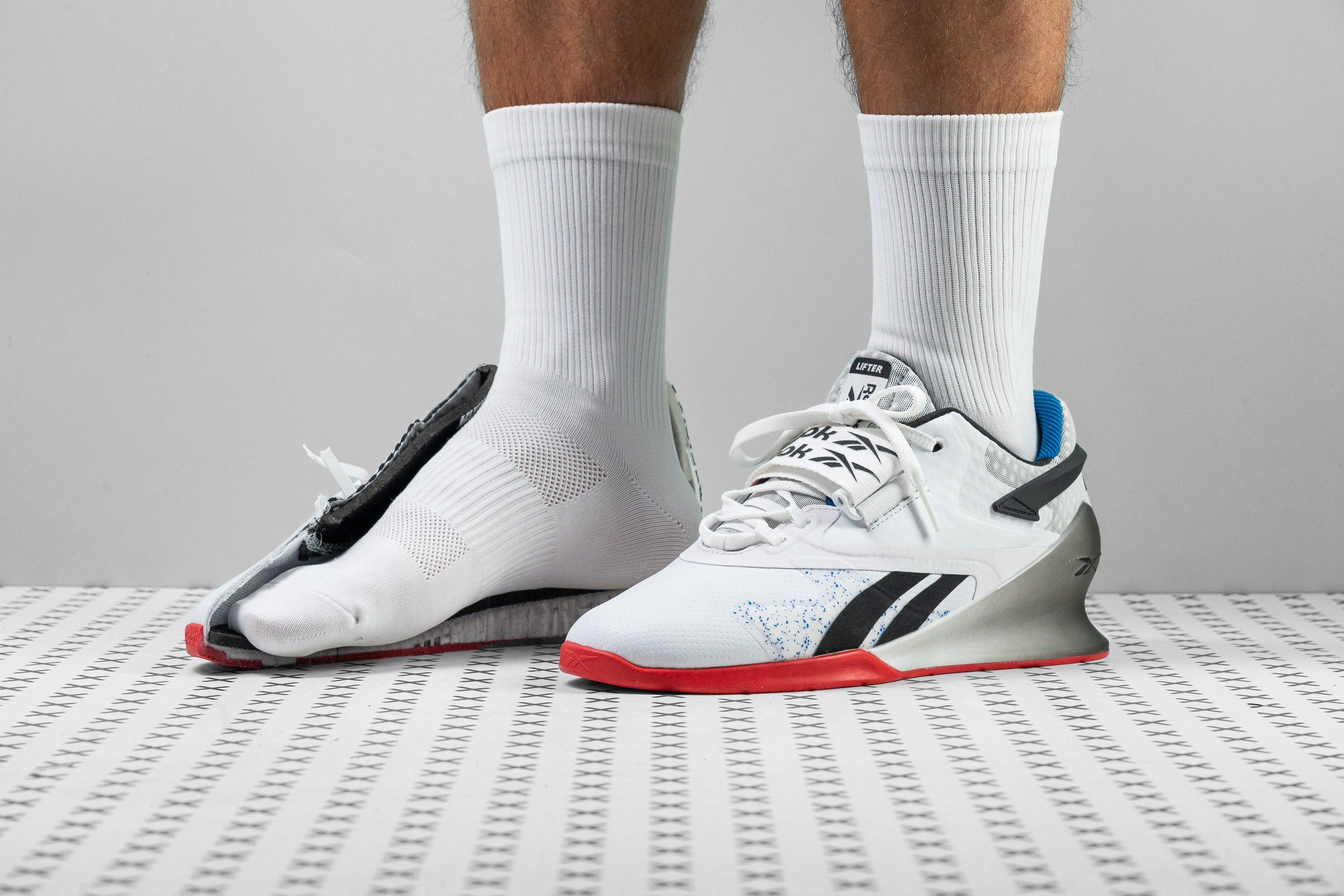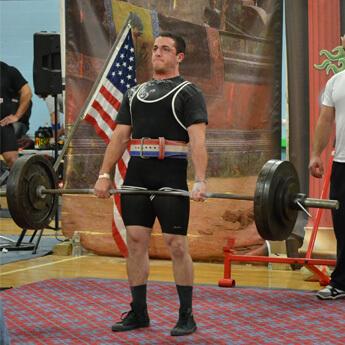Our verdict
Pros
- Unmatched stability
- Sturdy incompressible platform
- Elevated heel is perfect for squats
- Incredibly supportive upper
- Fantastic durability
- Reliable grip
- Aesthetically designed
Cons
- Not breathable
- Limited Velcro attachment
Audience verdict
- Top 9% in training shoes
- Top 12% in Reebok training shoes
Comparison
The most similar training shoes compared
+ + Add a shoe | |||||
|---|---|---|---|---|---|
| Audience score | 92 Superb! | 91 Great! | 87 Great! | 90 Great! | |
| Price | $200 | $200 | $220 | $120 | |
| Use | WeightliftingGymPowerlifting | WeightliftingGymPowerlifting | WeightliftingGymPowerlifting | WeightliftingGymPowerlifting | |
| Shock absorption | - | Low | Low | Low | |
| Energy return | - | Low | Low | Moderate | |
| Traction | - | - | Low | High | |
| Drop lab | 20.9 mm | 20.5 mm | 20.5 mm | 15.2 mm | |
| Heel stack lab | 34.6 mm | 33.5 mm | 33.0 mm | 30.0 mm | |
| Forefoot | 13.7 mm | 13.0 mm | 12.5 mm | 14.8 mm | |
| Weight lab | 21.6 oz / 612g | 20.1 oz / 571g | 22.1 oz / 627g | 15 oz / 425g | |
| Breathability | Warm | Warm | Warm | Warm | |
| Width / fit | Narrow | Medium | Medium | Narrow | |
| Toebox width | - | - | Narrow | Narrow | |
| Size | True to size | Half size small | True to size | True to size | |
| Midsole softness | Firm | Firm | Firm | Firm | |
| Stiffness | Stiff | Stiff | Stiff | Stiff | |
| Torsional rigidity | Stiff | Stiff | Stiff | Stiff | |
| Heel counter stiffness | Stiff | Stiff | Stiff | Stiff | |
| Toebox durability | Good | Decent | Good | Decent | |
| Heel padding durability | Good | - | Good | Bad | |
| Outsole durability | - | - | - | Decent | |
| Midsole width - forefoot | Very narrow | Wide | Very narrow | Narrow | |
| Midsole width - heel | Average | Wide | Average | Very narrow | |
| Widths available | Normal | Normal | Normal | NormalWide | |
| Insole thickness | Average | Very thick | Average | Average | |
| Outsole thickness | Average | Average | Average | Very thick | |
| Outsole hardness | Very soft | Very hard | Very soft | Average | |
| Heel tab | None | None | None | Pull tab | |
| Tongue: gusset type | Bootie | Bootie | None | None | |
| Tongue padding | Average | Very thick | Thick | Average | |
| Ranking | #4 Top 9% | #4 Top 13% | #16 Top 49% | #9 Top 28% | |
| Popularity | #44 Bottom 10% | #6 Top 19% | #19 Bottom 42% | #13 Top 40% |
Who should buy
We believe that the Legacy Lifter II is a must to consider if you are an athlete who:
- regularly trains with heavy weights up to 400 pounds and more
- prefers the highest heel elevation for squats
- takes part in weightlifting competitions
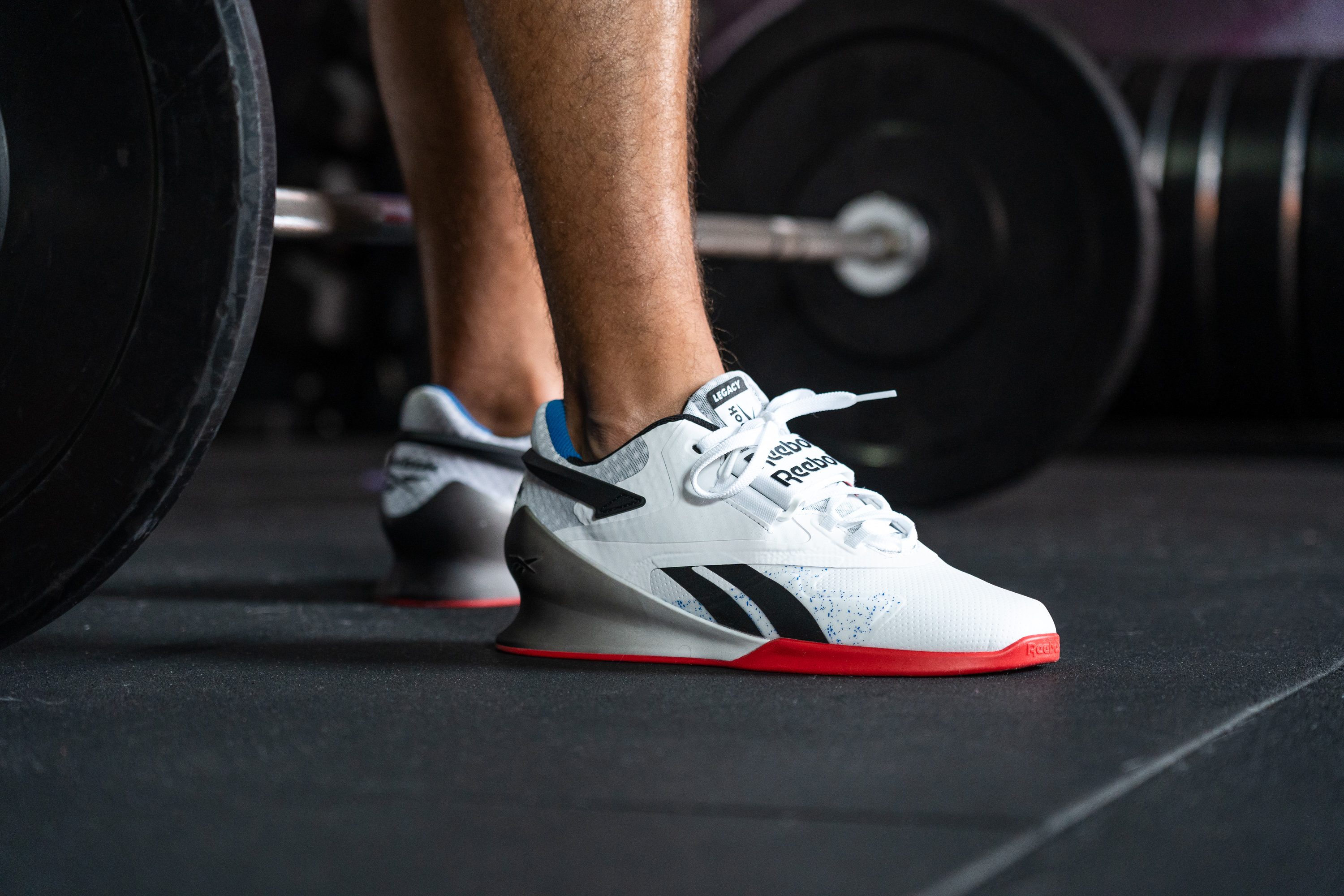
Who should NOT buy
Because of its genuine leather upper, the Legacy Lifter II can get pretty toasty. The newer Legacy Lifter III has a little better breathability.
This is also not the best option for those who are just starting out with weightlifting. For your very first lifting shoe, we recommend getting a less elevated heel. The Nike Savaleos or the Adidas Powerlift 5 are more beginner-friendly and versatile with their 15-mm drop.

Platform
Heel stack
Meant for advanced athletes, the Legacy Lifters are some of the tallest lifting shoes.
Using a caliper, we measured the shoe's stack height at 34.6 mm in the heel. This is 3 mm taller than average!

Higher heels are so important for heavy lifting because they put your body in a more ergonomic position for squats. They help to keep your torso upright while minimizing stress on the knees and ankles. Those with poor ankle mobility benefit a lot from having their heels elevated.
| Legacy Lifter II | 34.6 mm |
| Average | 28.3 mm |
Forefoot stack
The forefoot stack is expected to be much lower than the heel in this type of athletic shoe.
Our caliper shows 13.7 mm of stack under the toes, which is about the same as the average.
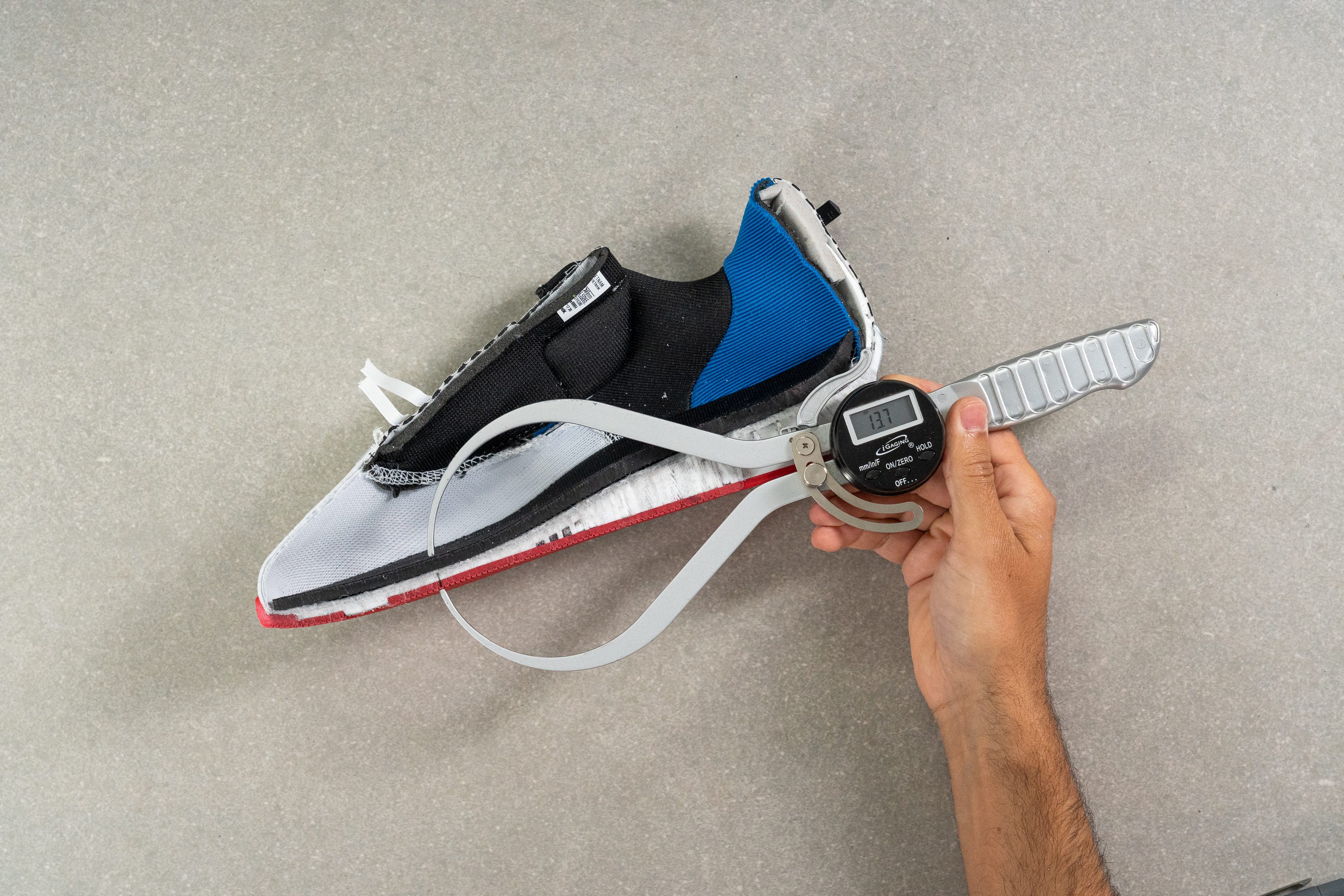
| Legacy Lifter II | 13.7 mm |
| Average | 12.9 mm |
Drop
The difference in stack heights gives us a drop of 20.9 mm. This is a little lower than the officially stated 22 mm. We don't think it's a critical difference but it's still important to point out.
This is the highest heel elevation among lifting shoes and is most suitable for seasoned athletes. Beginners may find it too tall for their needs and we recommend that they start with a lower drop of 15 mm instead. The Adidas Powerlift 5 and the Nike Savaleos are both a better starting point.
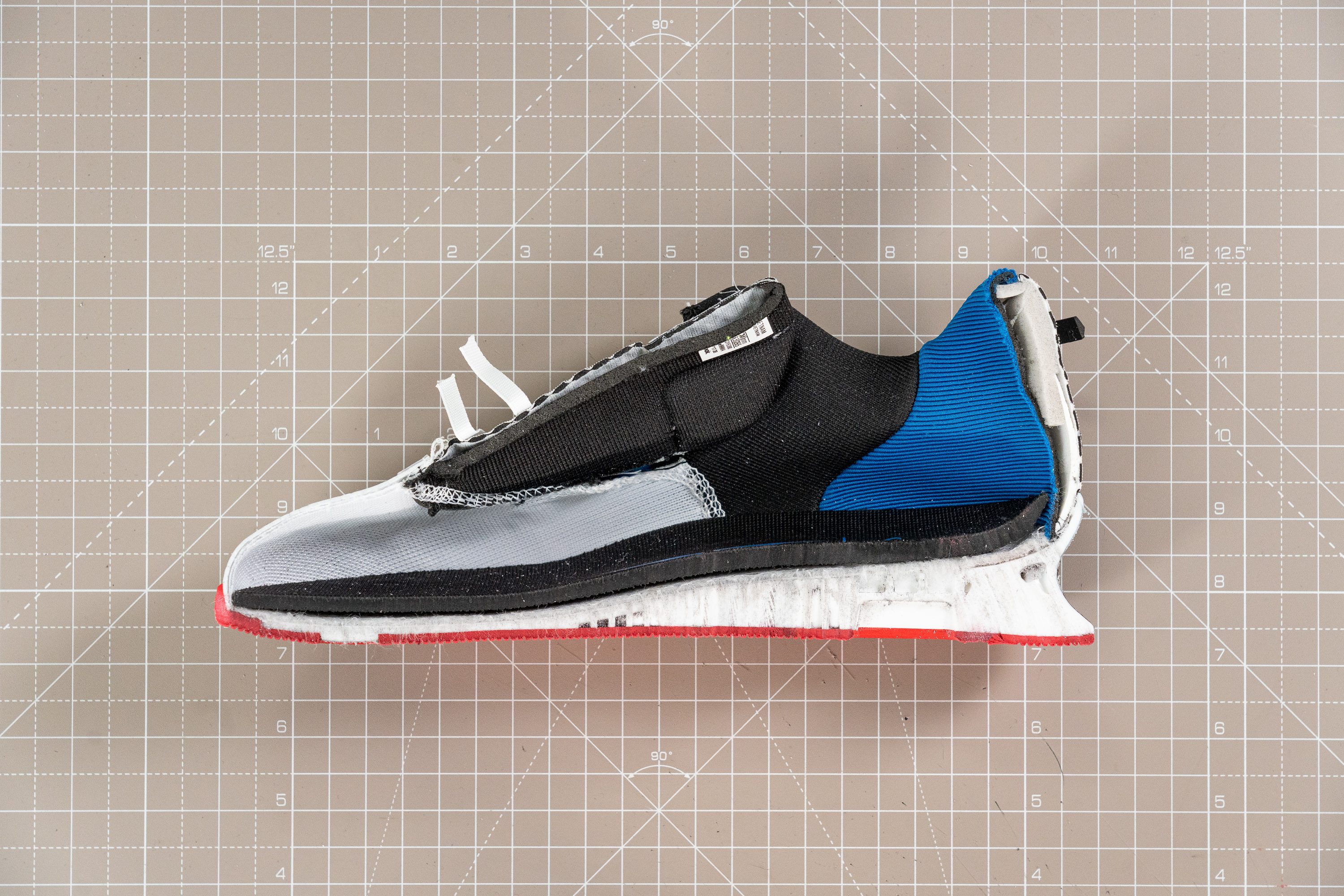
| Legacy Lifter II | 20.9 mm |
| Average | 15.4 mm |
Platform firmness
A squishy sole is the last thing you want to experience when lifting a heavy barbell above your head.
But you don't even have to worry about it with the rock-hard platform of the Reebok Legacy Lifter II. Pressing a durometer against the shoe's wedge, we got a reading of 95.6 HA which is among the firmest we've ever seen in our lab.
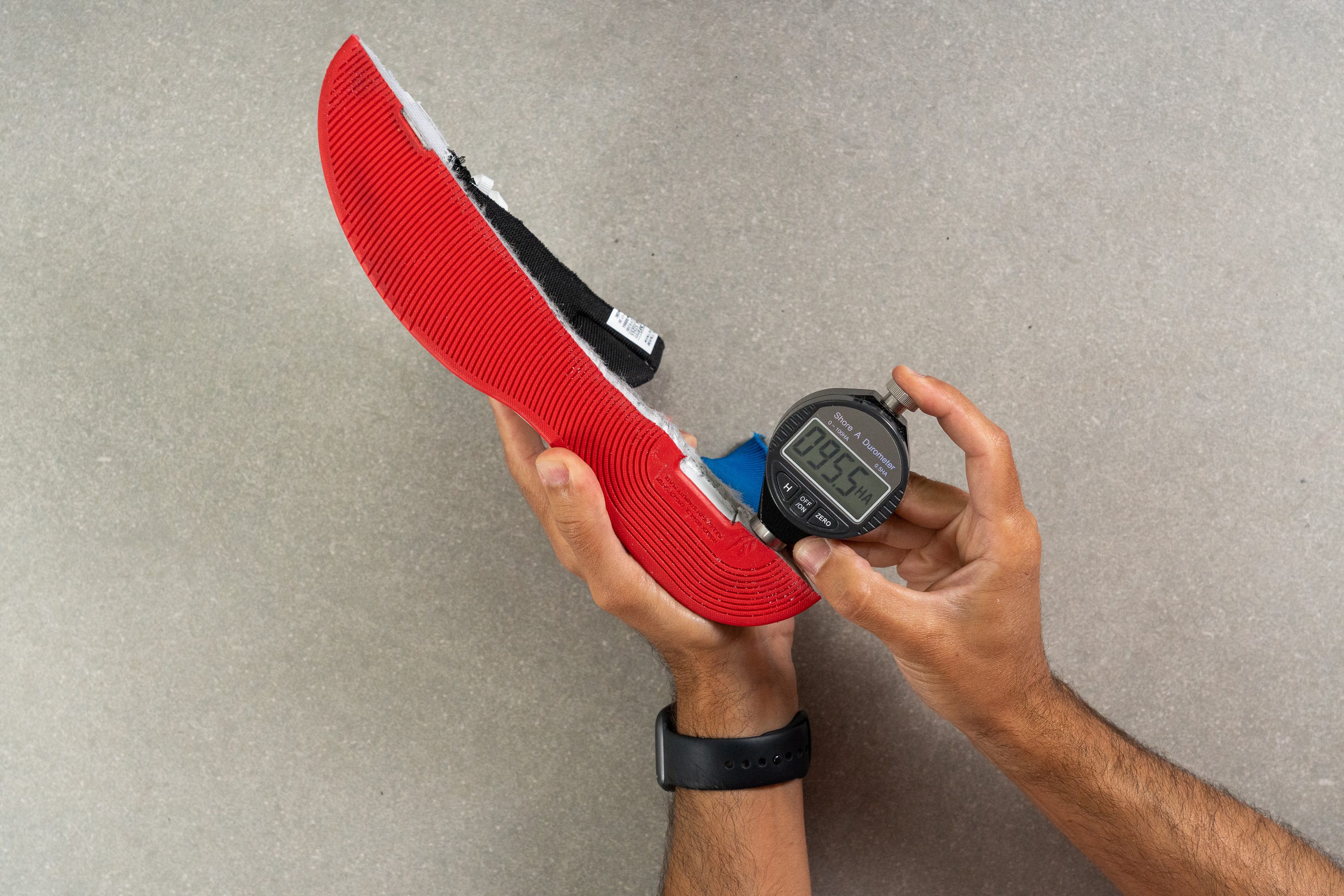
| Legacy Lifter II | 95.6 HA |
| Average | 69.2 HA |
Size and fit
Size
Reebok Legacy Lifter II fits true to size (18 votes).
Width / Fit
Just like most lifting shoes, the Legacy Lifter II has a pretty snug, one-to-one fit. Measuring the widest part of the upper with a caliper, we found that it is 97 mm wide, which is about the same as the average.
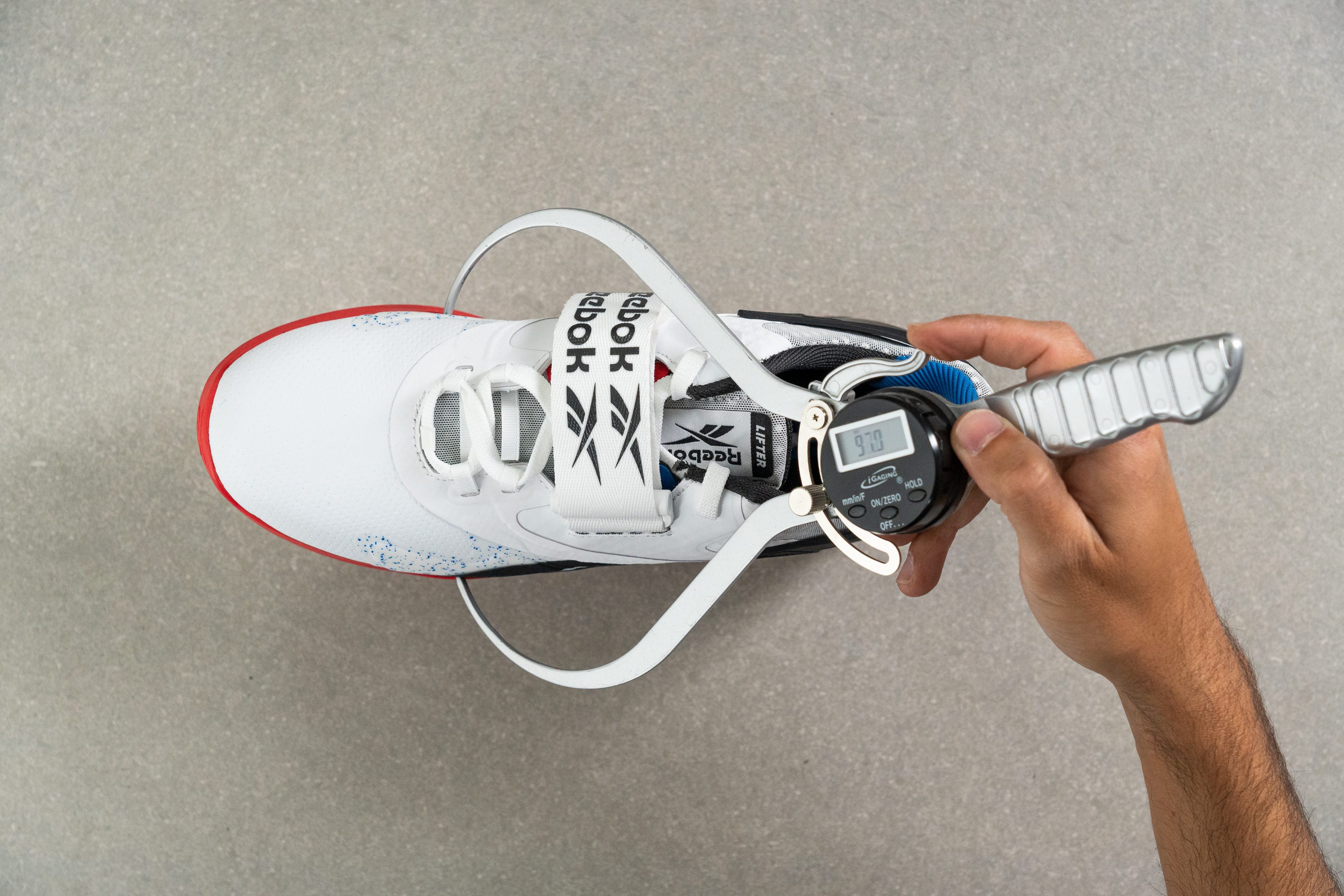
But do keep in mind that the leather upper has zero give to it.
This test follows an older methodology, which is why you don't see recently tested shoes in the chart. Results from different methodologies can not be compared.
| Legacy Lifter II | 97.0 mm |
| Average | 99.9 mm |
Toebox width
The shoe also narrows down towards the front.
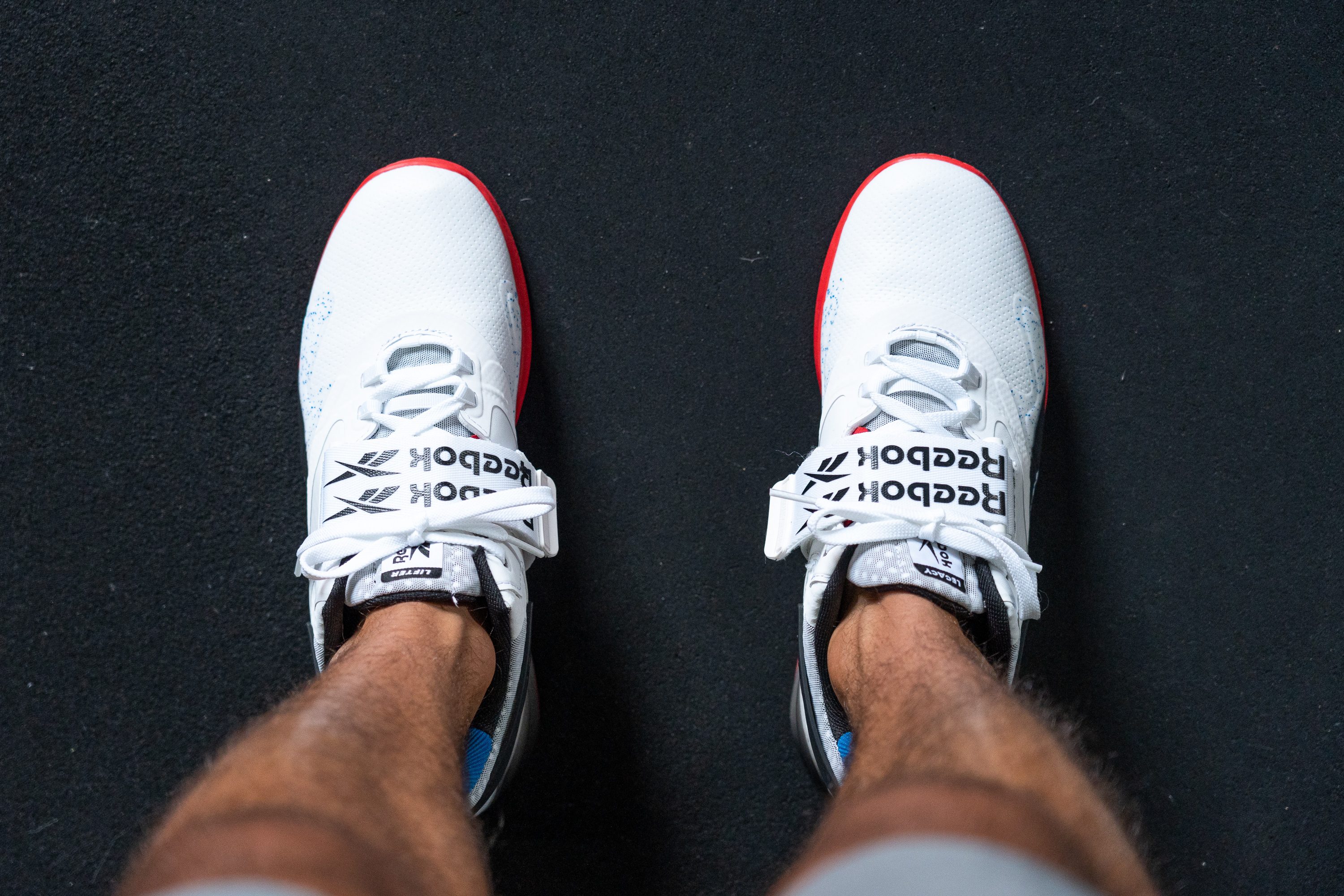
We measured the toebox width at the big-toe point to see how tapered it is. The caliper shows 73.7 mm which is the same as the other lifting shoes we've measured.
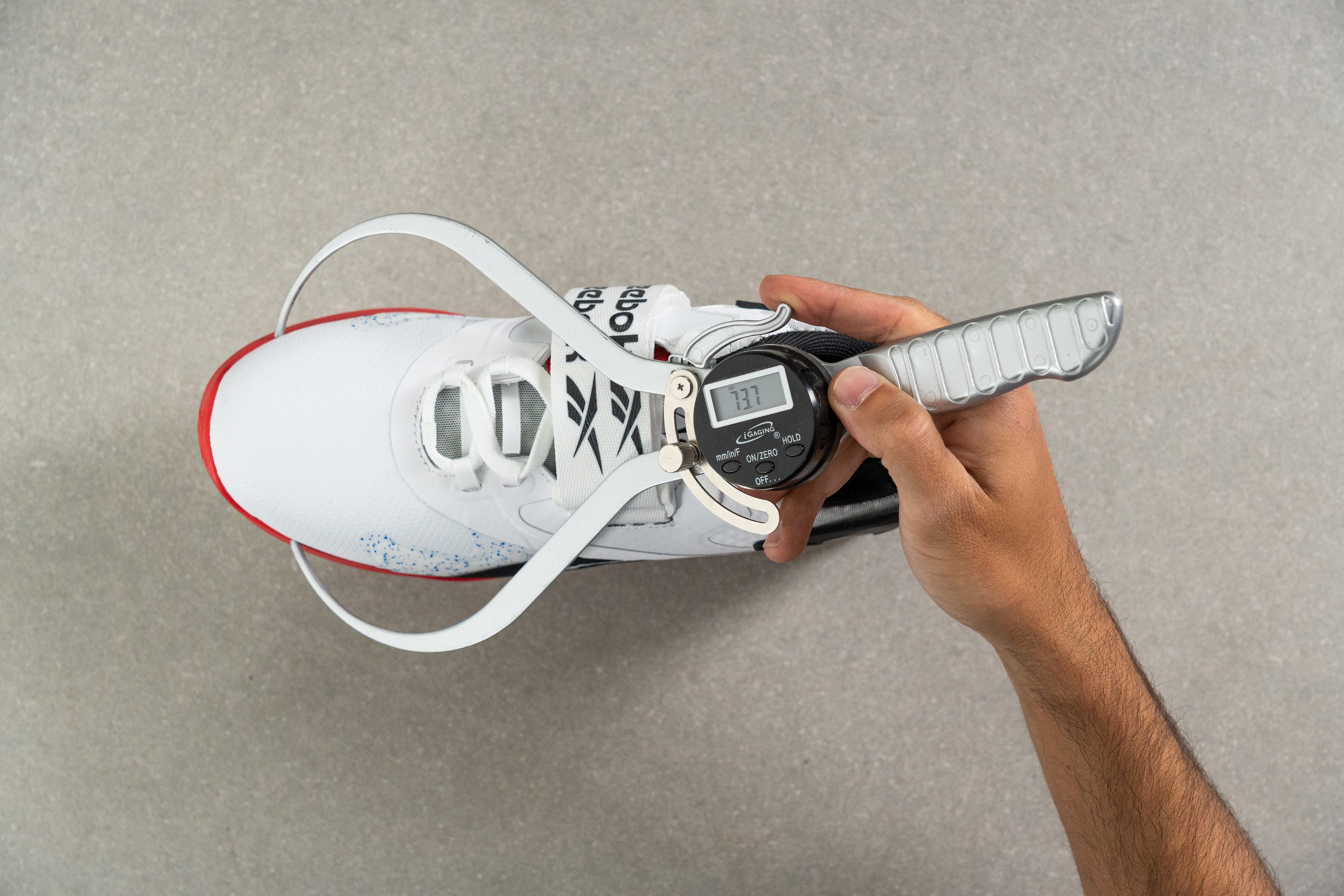
Stability
Lateral stability test
No matter how wobbly your ankles may get when lifting, the Legacy Lifter II has got your back.
This shoe is the epitome of stability.
Torsional rigidity
Attempting to twist the Legacy Lifter II sideways gave zero results. It is stiff as concrete! Not only is the platform itself very stiff but it's also reinforced with TPU sidewalls for added support.
Needless to say that the shoe got the highest score for torsional rigidity. Phenomenal stability!
| Legacy Lifter II | 5 |
| Average | 4.3 |
Heel counter stiffness
The heel counter follows suit by being extraordinarily stiff too. We felt a very secure heel clutch while wearing the shoe, with zero change of rolling our ankles.
Pushing and squeezing it reveals how much structure there is to this part of the shoe. Another 5 out of 5 goes to the Legacy Lifter II's stability.
| Legacy Lifter II | 5 |
| Average | 4.8 |
Midsole width - forefoot
What's curious is that the platform of the Legacy Lifter II is actually not the widest.
We measured 102.7 mm in the widest part of the forefoot which is about 4 mm narrower than the average. However, we must add that it never felt that way training in the Lifter II.
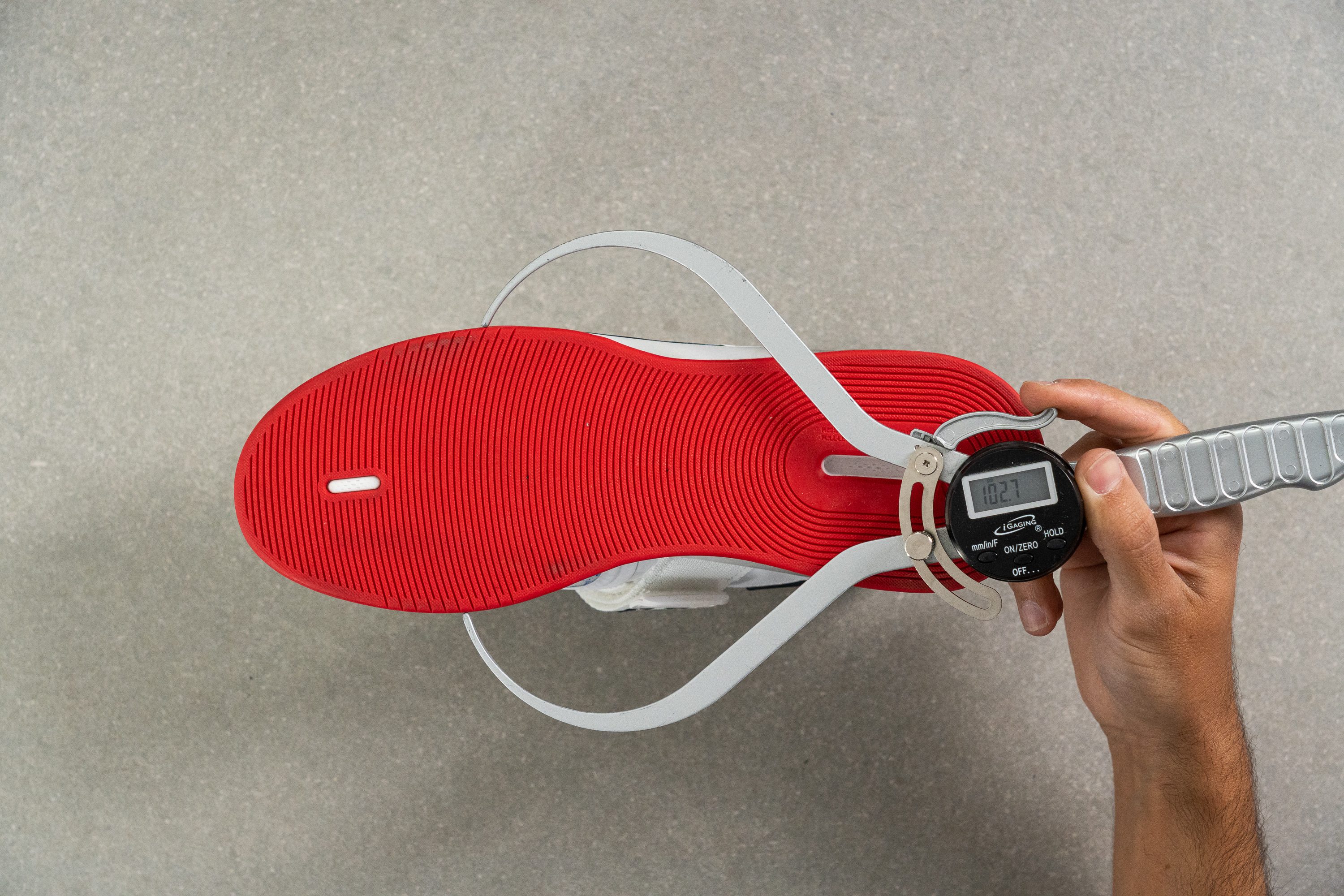
| Legacy Lifter II | 102.7 mm |
| Average | 107.7 mm |
Midsole width - heel
In the widest part of the heel, we got a measurement of 86.6 mm. This is about the same as the average of lifting shoes.
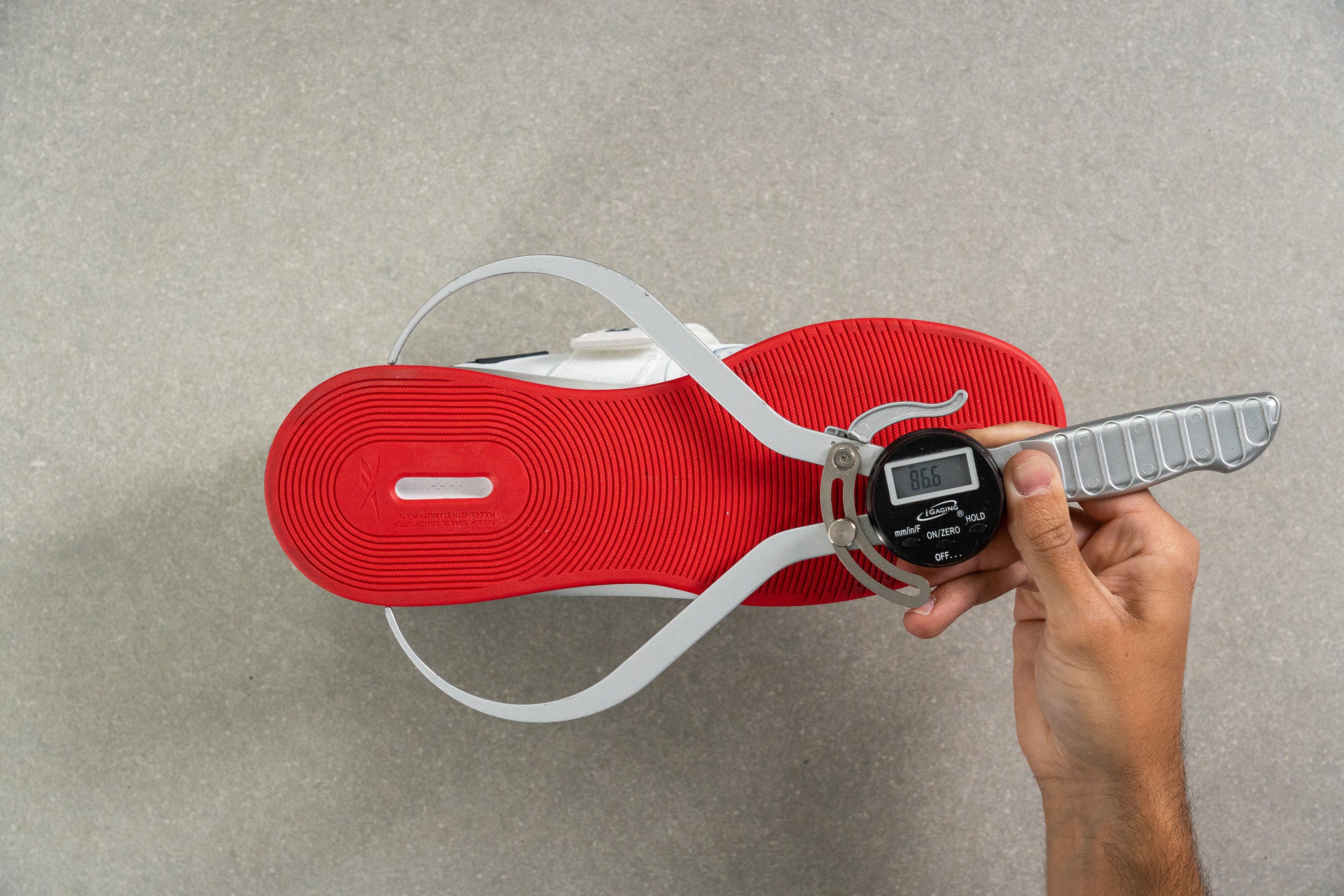
| Legacy Lifter II | 86.6 mm |
| Average | 86.7 mm |
Flexibility / Stiffness
The Legacy Lifter II is not very easy to bend in the forefoot either. This makes the already stable platform feel even more planted.
It took 25.3N of force to bend the shoe to a 90-degree angle, based on our gauge tool. This is the same as it took other lifting shoes on average.
Of course, walking in this Reebok lifter is not the comfiest experience but that's the price to pay for its incredible stability.
This test follows an older methodology, which is why you don't see recently tested shoes in the chart. Results from different methodologies can not be compared.
| Legacy Lifter II | 25.3N |
| Average | 23.5N |
Weight
Based on our lab measurements, the Legacy Lifters are among the heaviest lifting shoes.
While the Lifter II is not as heavy as the III, it is still about 3 ounces heavier than the average. The shoe tips the scale at a whopping 21.6 oz (612g)!
However, some athletes actually benefit from feeling more weight on their feet as it creates a more grounded experience.
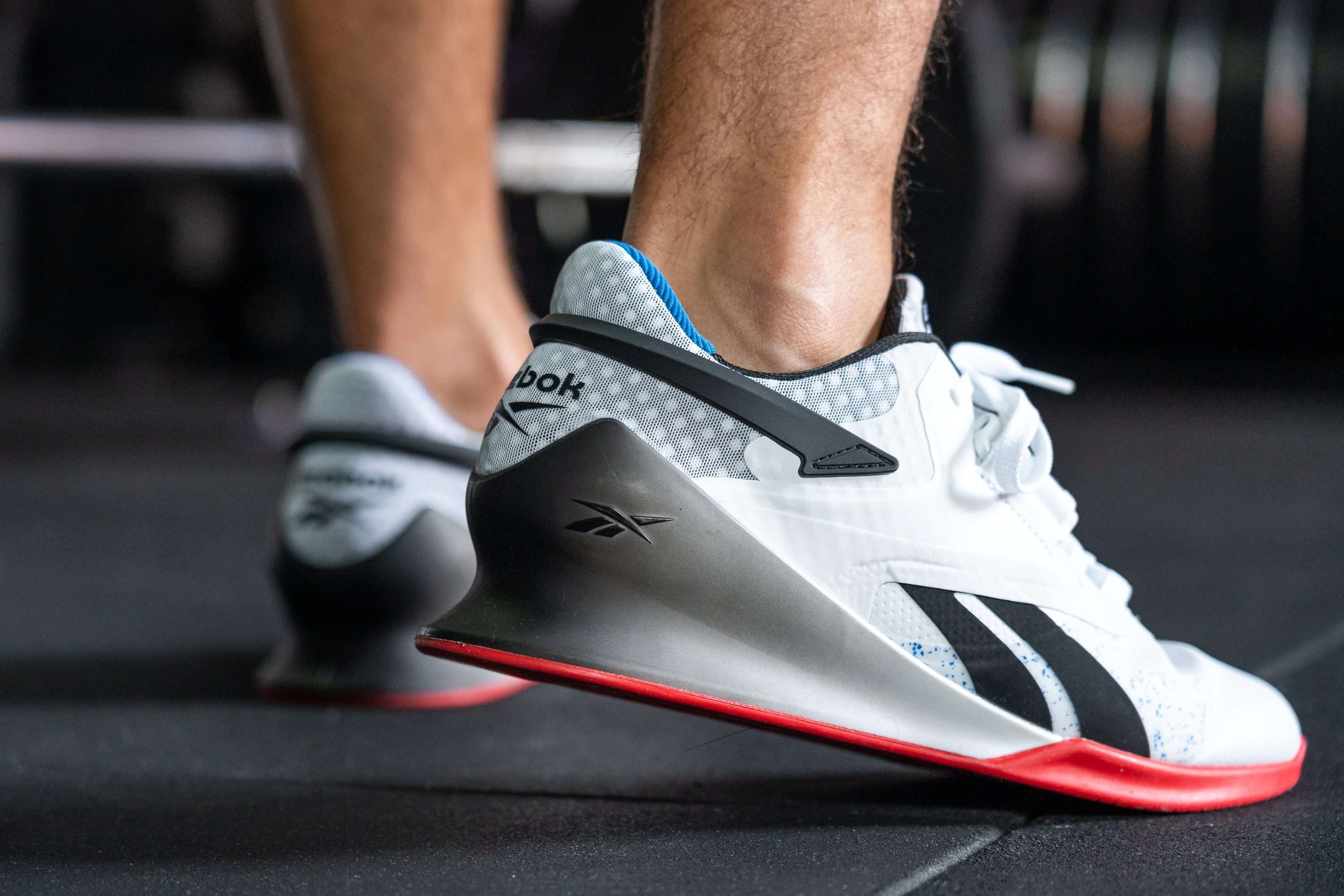
| Legacy Lifter II | 21.6 oz (612g) |
| Average | 17.5 oz (497g) |
Breathability
Prepare to get a little sweaty in the Legacy Lifter II. It is one of the least breathable lifting shoes in our lab.
We test each shoe's breathability by pumping smoke through its upper. The amount of smoke that passes through it allows us to rate the ventilation from 1 to 5.
It's easy to see why the Legacy Lifter II got the lowest score.
You might ask "but what about those perforations on the leather?" Well, let's have a look at them through our microscope.
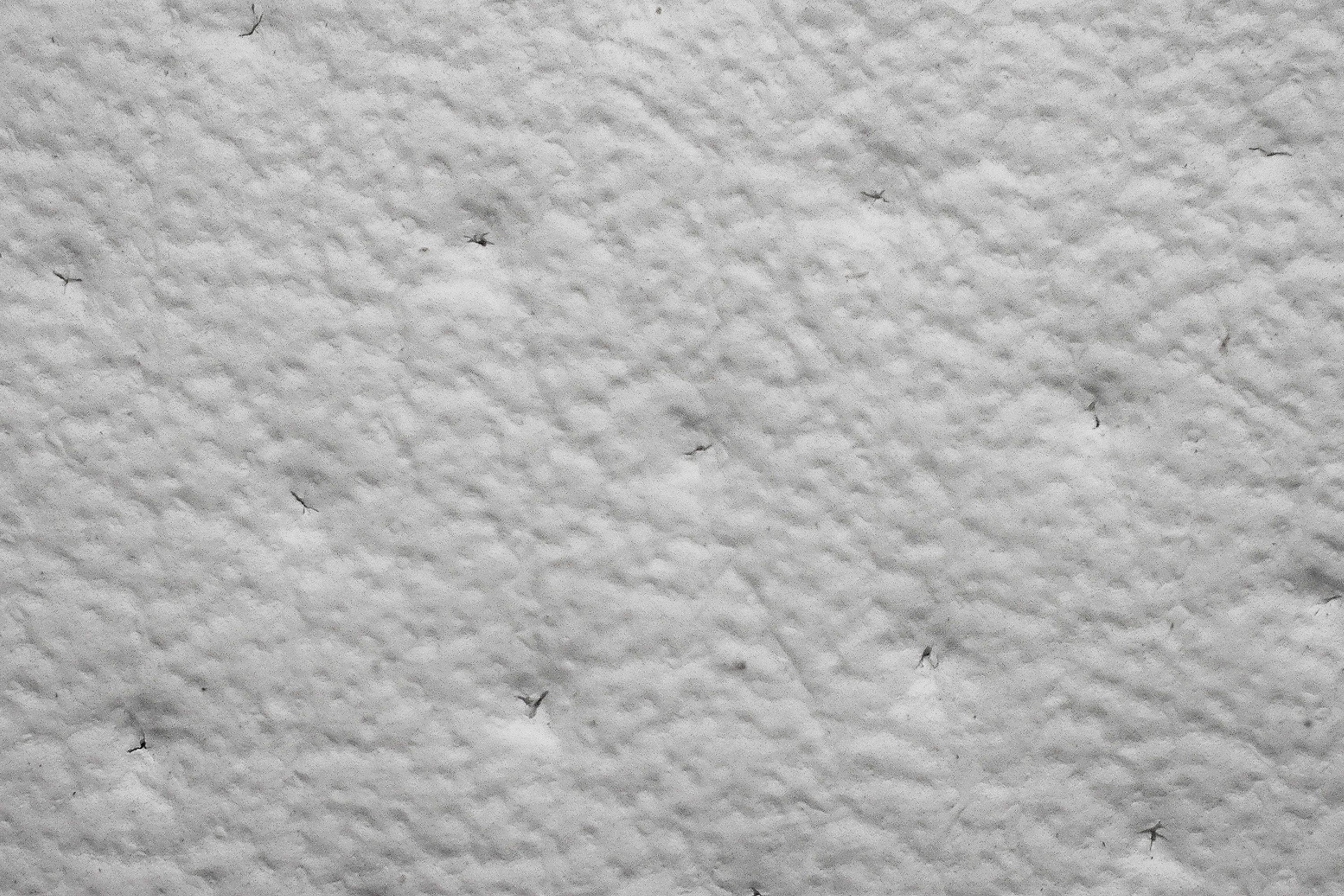
And now let's compare them to the perforations on the Legacy Lifter III. Obviously, the latter got a higher breathability score from us.
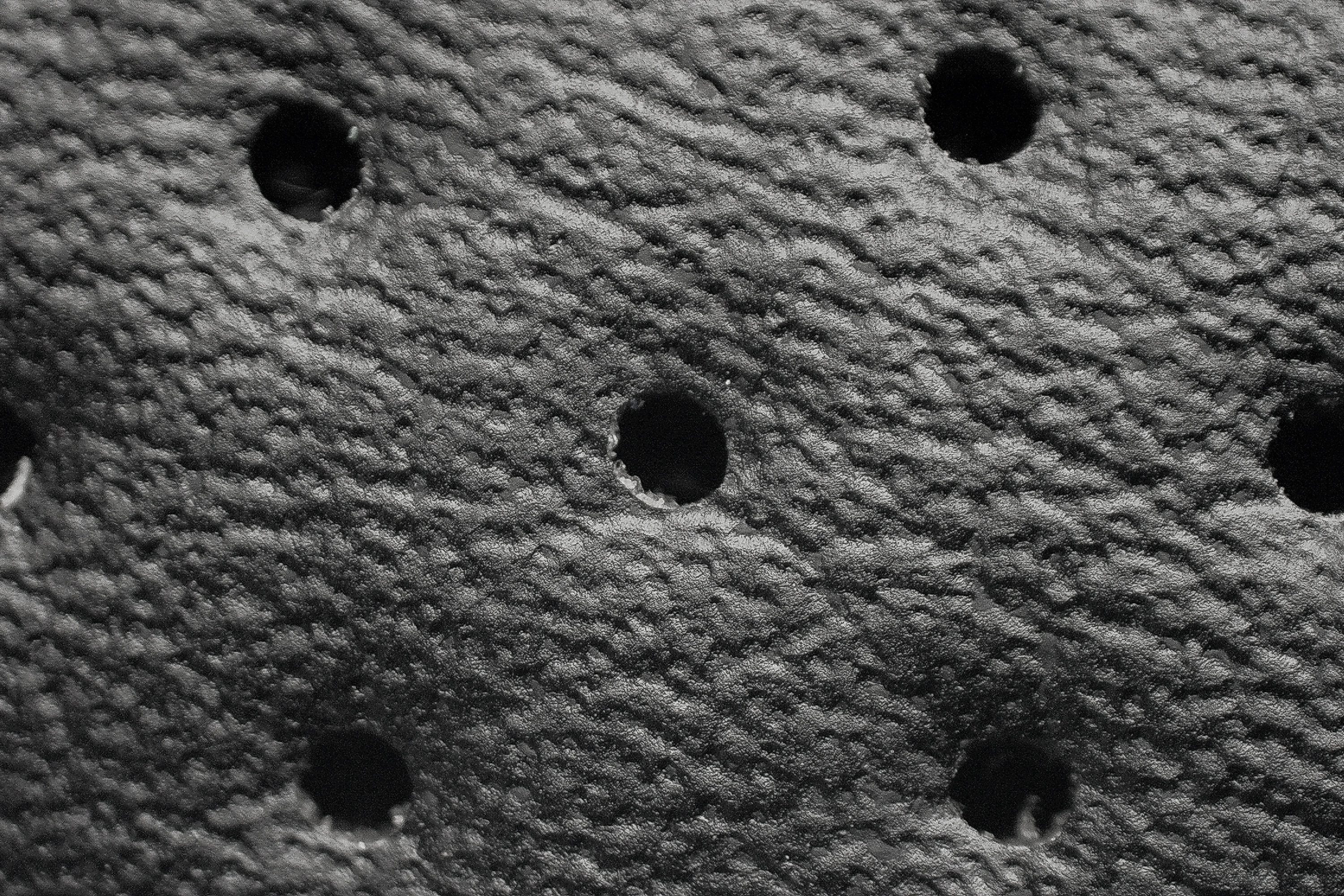
| Legacy Lifter II | 1 |
| Average | 2 |
Durability
Toebox durability
This upper may not be airy, but boy it is sturdy!
Beating up the shoe's toebox with a Dremel for 12 seconds, we were blown away by its abrasion resistance! The damage is so small that it looks more like an accidental scuff.
It's hard to find another shoe that could compete with that! Even the acclaimed Nike Romaleos 4 was left with a glaring see-through hole.
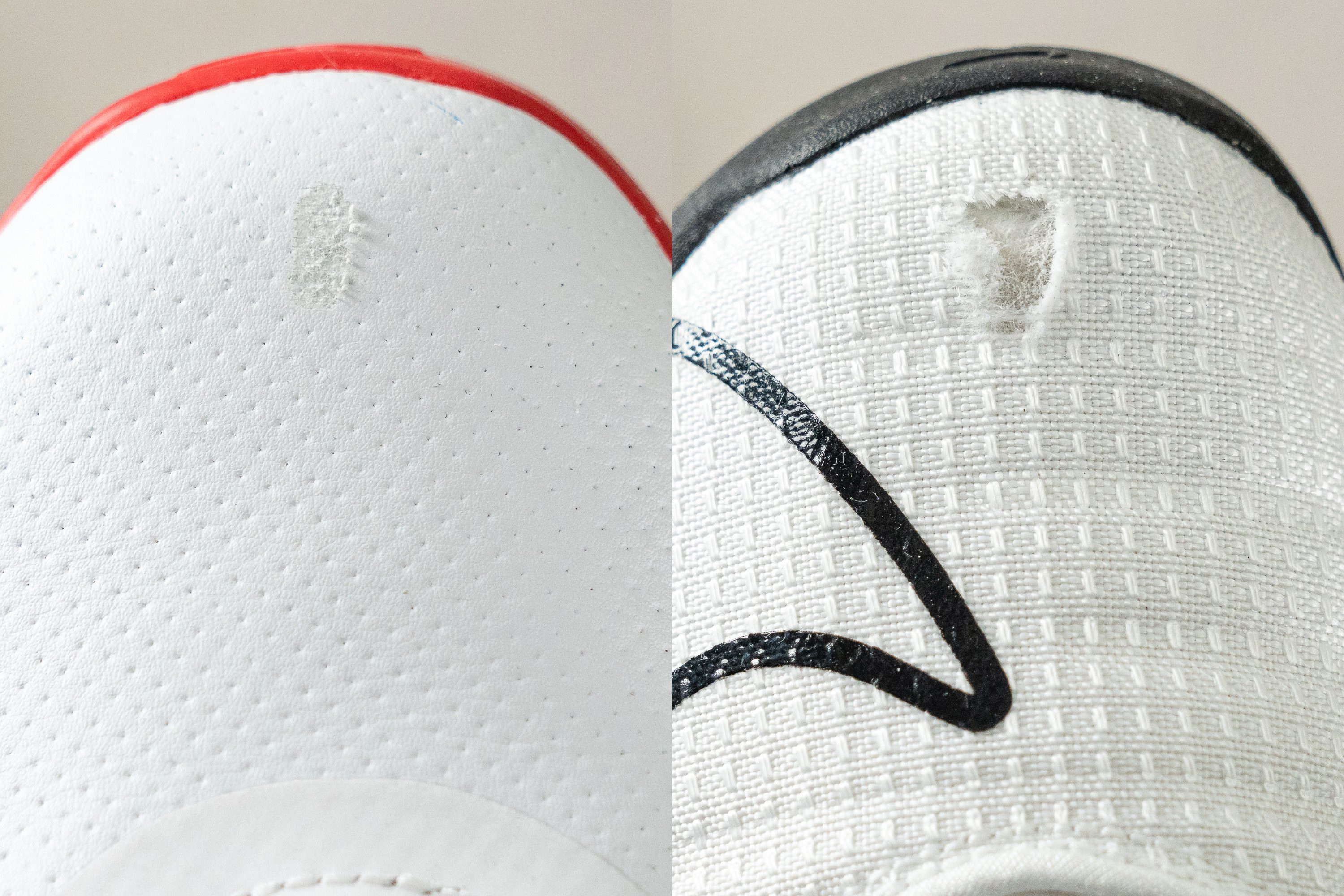
| Legacy Lifter II | 5 |
| Average | 3.5 |
Heel padding durability
The heel padding also proved to be incredibly wear-resistant in our Dremel test.
After 4 seconds of drilling, the fabric was practically unscathed. We rated its durability with a maximum score of 5/5.
| Legacy Lifter II | 5 |
| Average | 3.6 |
Outsole hardness
To assess the durability of the outsole, we measured its hardness and thickness. In our experience, these two parameters are correlated with how abrasion resistant the component is.
With a durometer reading of 80.4 HC, the shoe's rubber is a little softer than average. However, it's not enough to compromise durability.
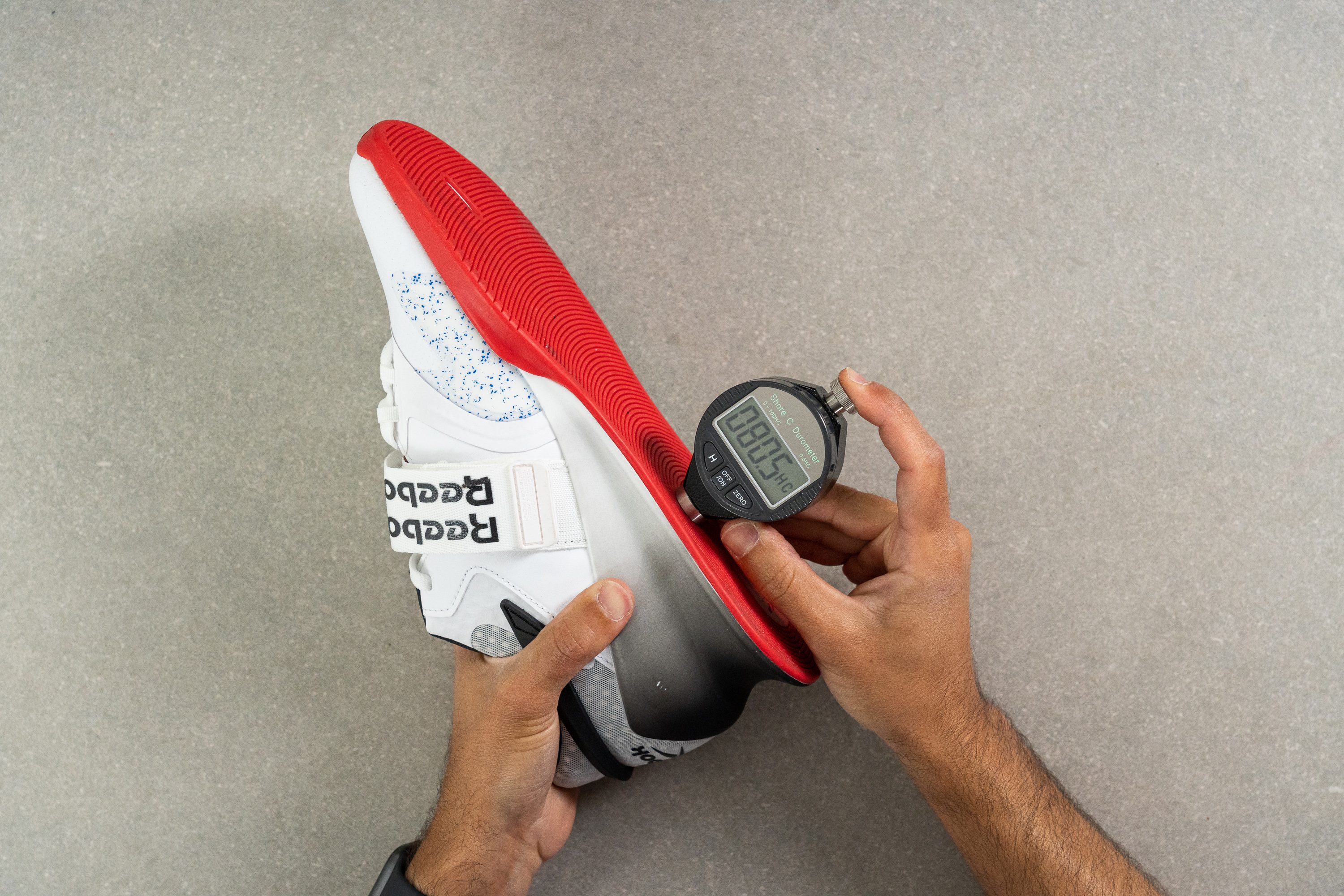
| Legacy Lifter II | 80.4 HC |
| Average | 85.1 HC |
Outsole thickness
Meanwhile, the caliper shows 3.2 mm of rubber thickness which is a little thinner than average.
We don't find this to be alarming given that this type of shoe is only used indoors.
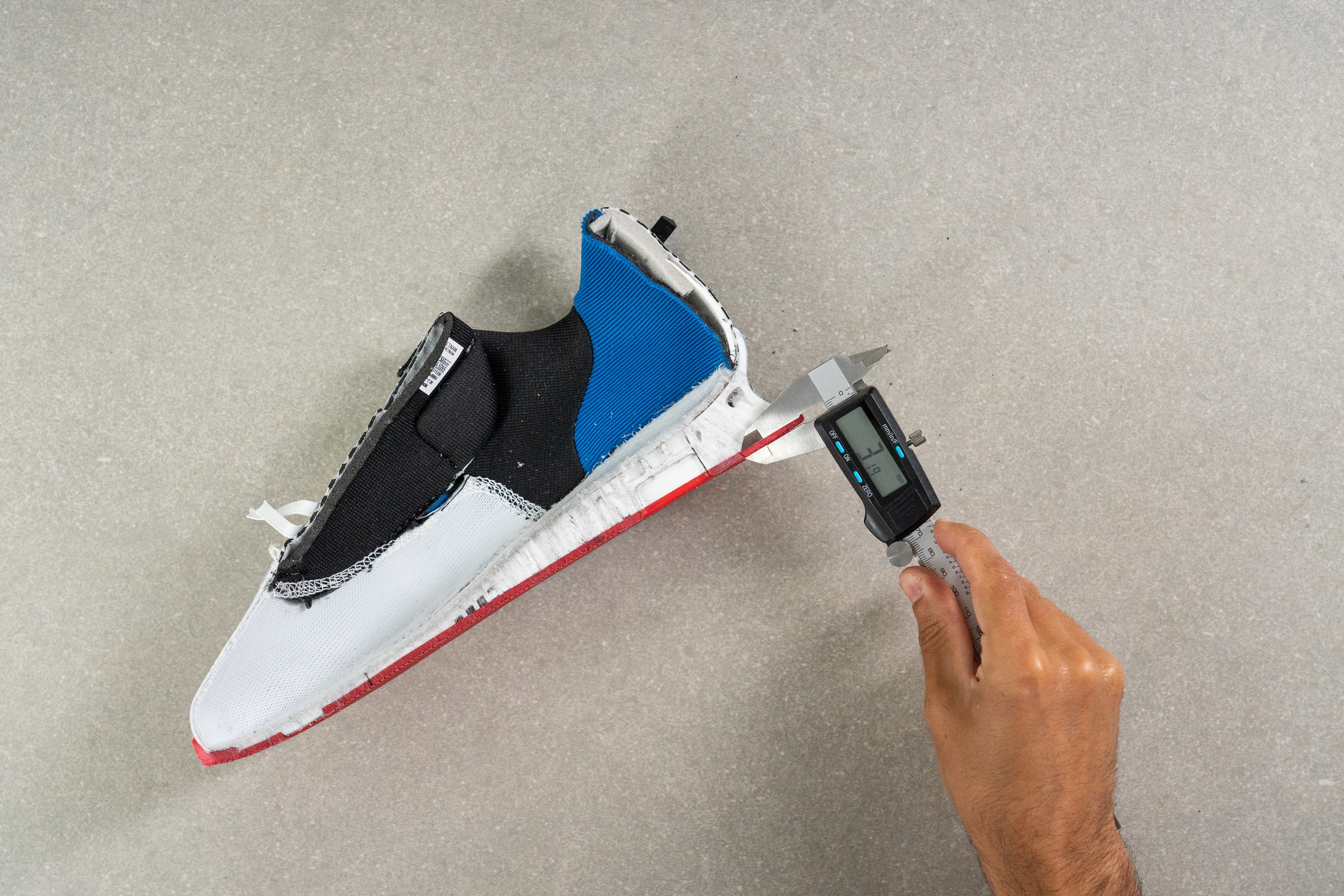
| Legacy Lifter II | 3.2 mm |
| Average | 3.6 mm |
Misc
Insole thickness
The shoe comes with a padded insole which is 6.7 mm thick, based on our caliper measurement. This is a typical insole thickness of a lifting shoe.
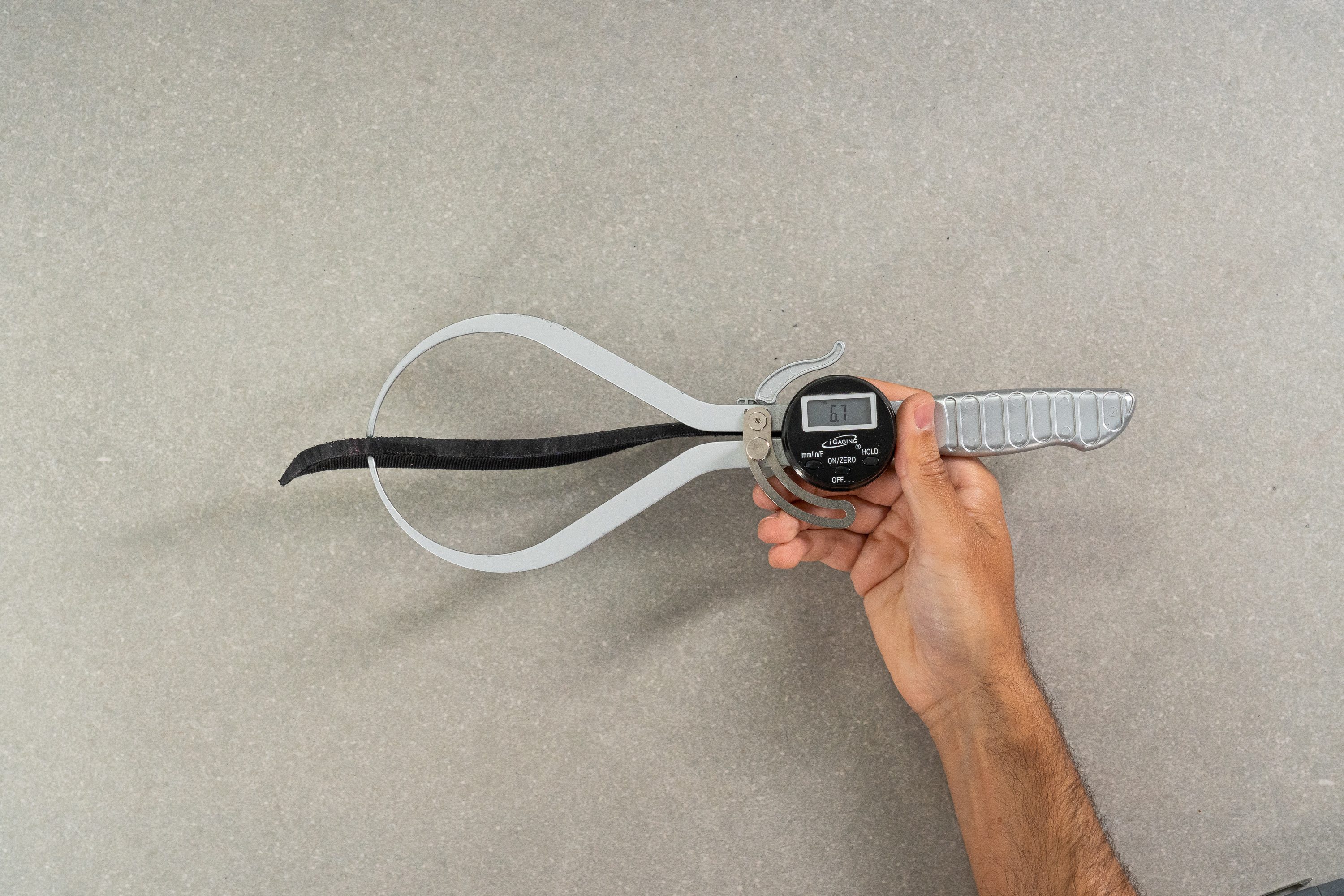
| Legacy Lifter II | 6.7 mm |
| Average | 5.9 mm |
Removable insole
In case you need to use custom orthotics, the Legacy Lifter II comes with a removable insole.

| Legacy Lifter II | Yes |
Tongue padding
The tongue is amply padded too. Our caliper shows that it is 4.7 mm thick, which is about the same as the average.

| Legacy Lifter II | 4.7 mm |
| Average | 5.0 mm |
Tongue: gusset type
The shoe features a layered bootie-like upper to create a very secure foot containment. As a result, we experienced zero foot shifting inside the shoe.
If you are someone with narrow or low-volume feet, you may prefer the Legacy Lifter III. It comes with a nostalgic fit-regulation technology called Pump. Pressing it inflates the tongue to fill up all the access space you may have left inside the shoe.
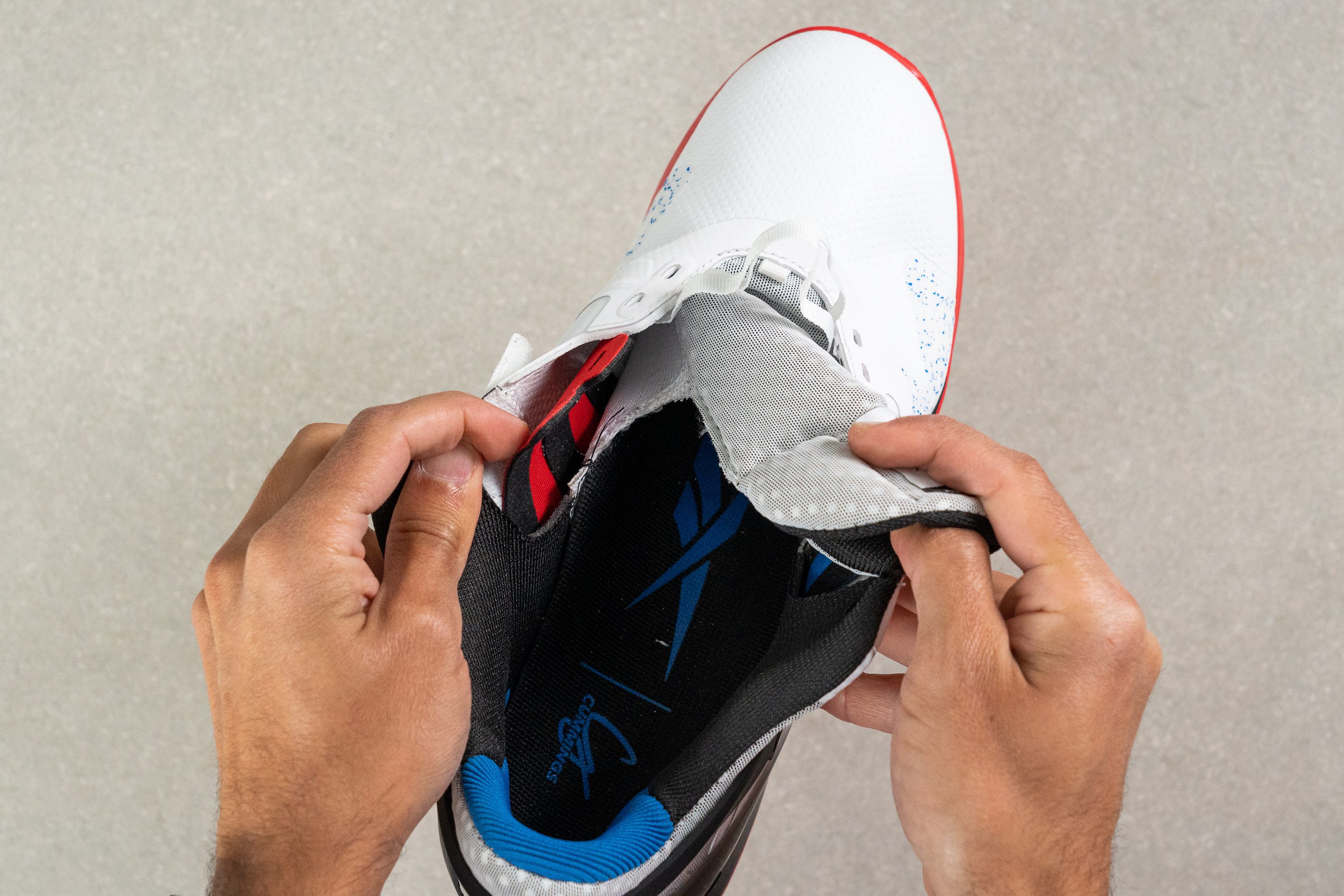
| Legacy Lifter II | Bootie |
Heel tab
The shoe doesn't have a pull tab so you will have to unlace it more or use a shoehorn for a quick on-and-off.
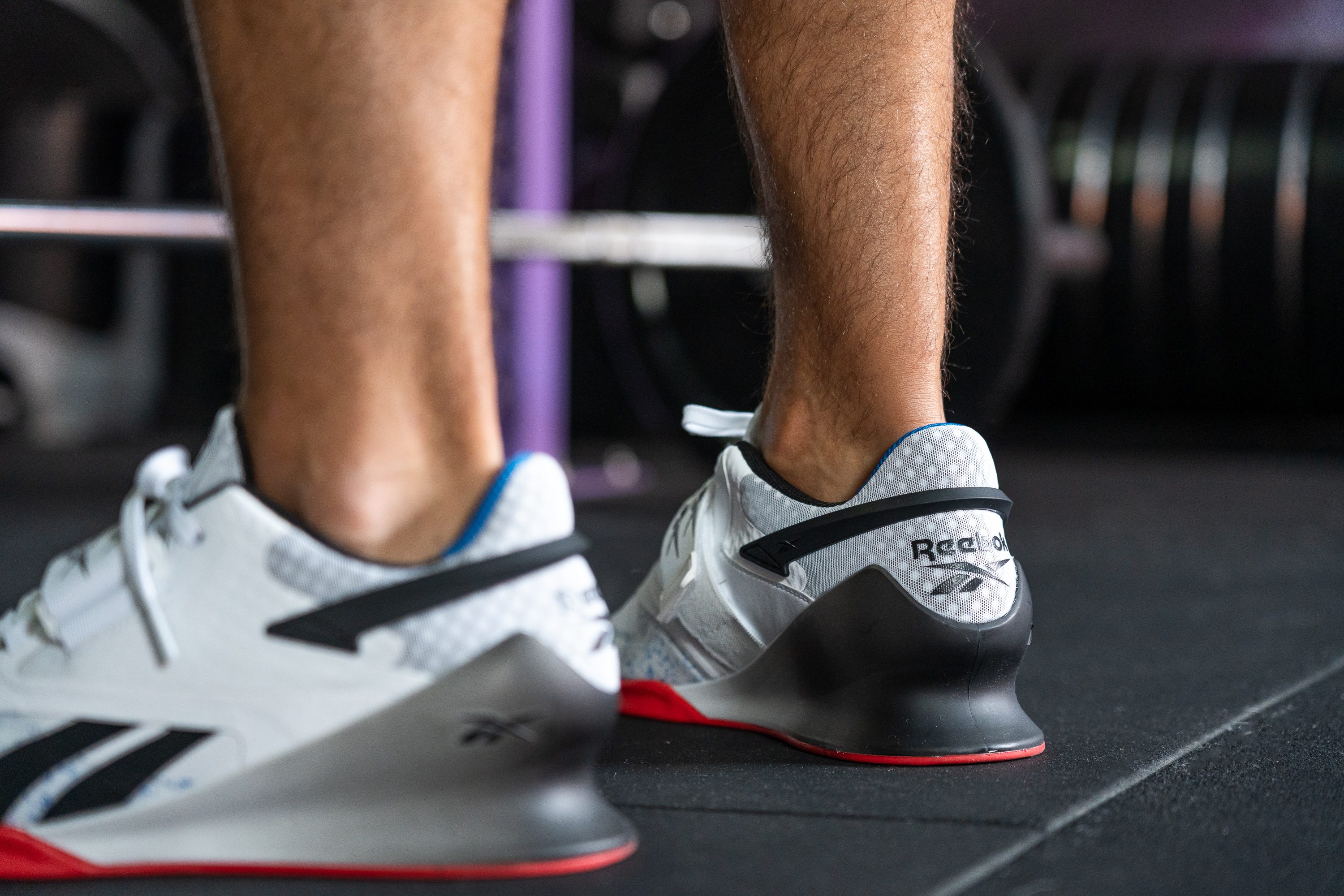
| Legacy Lifter II | None |
